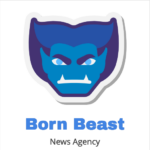Enhancing Readability and UX
Readability is a quick benefit of Tiny URLs. Long, complicated URLs are hard to remember and seem professionally in emails, social media, and printed documents. A conventional URL with thousands of letters, slashes, and symbols might confuse readers and deter clicks. Tiny URLs, on the other hand, provide simple, manageable links that are both aesthetically beautiful and easy to grasp.
This minimalism improves the user experience, especially on Twitter and LinkedIn, where space is restricted and clarity is key. Shorter URLs are easier to utilize in text messages, posters, and conversations.
Digital Platform Space Optimization
Character limitations are common on social media. Twitter limits tweets to 280 characters. Long URLs can take up a lot of text in such little areas, leaving little room for context or message. Tiny URLs let users make the most of their space by allowing them to include context, hashtags, and calls to action.
Tiny URLs’ compactness helps preserve visual harmony and reduce distraction in multimedia content like infographics and YouTube video descriptions.
Analytics and tracking
One of Tiny URLs’ biggest benefits is tracking and analyzing link performance, beyond aesthetics and ease. Most URL shortening providers include detailed information on clicks, user location, devices, and referral sources. This data is crucial for marketers, enterprises, and content providers assessing campaign performance.
By monitoring Tiny URLs shared across platforms, marketers may understand which channels drive traffic and conversions. Better decision-making, enhanced marketing tactics, and higher ROI result from this understanding.
Building Trust and Branding
Many current URL shorteners let customers add brand names, keywords, or campaign titles to their Tiny URLs. A branded short link like yourbrand.link/summerdeal looks professional and builds user trust. Users trust customized URLs more than generic or random sequences of characters, minimizing the risk of spam or dangerous links.
Moreover, branded Tiny URLs boost brand awareness. Sharing or reposting a branded short link boosts brand awareness and memory, making it a powerful digital branding tool.
Facilitating Offline Engagement
Tiny URLs are important for online and offline marketing. Long URLs are hard to see or type on business cards, flyers, brochures, and posters. Tiny URLs are easier to type into browsers, enhancing audience interaction. Tiny URLs are sometimes printed with QR codes, but a memorable short link provides accessibility without scanning.
Avoiding Links That Break
Long URLs are commonly truncated in email and messaging, especially if reformatted or sent. Broken links can annoy users and lose traffic. Tiny URLs ensure a smooth user experience since they are short and less prone to line breaks.
Conclusion
An increasingly digital and mobile-first world makes Tiny URLs a strategic need, not merely a style option. Tiny URLs improve readability, space, tracking, and trust. URL shortening may improve internet performance and communication for company owners, content creators, marketers, and daily users. Tiny URLs will remain essential for efficient, effective, and powerful link sharing as the digital world evolves.
